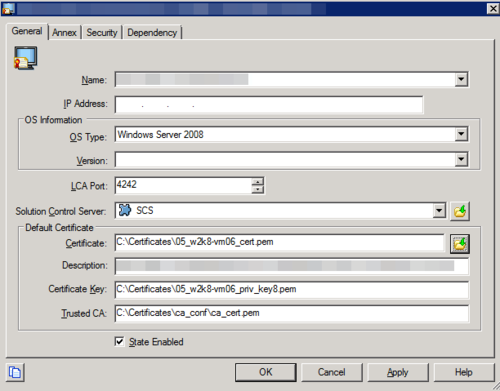Installing GRAT
Contents
Genesys Administrator
Genesys recommends that you configure the GRAT by using Genesys Administrator. If you use Genesys Administrator, you can deploy the installation package from within Genesys Administrator.
Configuration Manager
You can configure the GRAT by using Configuration Manager if you are using an older version of Configuration Server, prior to 8.0.2, where Roles are not supported. If you use Configuration Manager, you will have to:
Non-English Environments
When operating the GRAT in a non-English environment, you will need to configure the URIEncoding option to properly operate and integrate with the Genesys Framework environment. By default, Tomcat uses ISO-8859-1 character encoding when decoding URLs received from a browser. If you wish to use characters not included in this character set, you will need to set the URIEncoding option to UTF-8 in the server.xml file on the Connector that is used for the Genesys Rules Authoring Tool.
For example:
<Connector connectionTimeout="20000" port="8080" protocol="HTTP/1.1" redirectPort="8443" URIEncoding="UTF-8" useBodyEncodingForURI="true"/>
Security Certificates in Initial Release of 8.5.1
GRE and GRAT applications are unable to understand thumbprint certificates from the Windows Microsoft Certificate Store while connecting to Configuration Server or Message Server. Consequently they cannot establish a TLS connection to either Configuration Server or Message Server, and a security error is generated, such as this:
15:14:31.445 Alarm 21363 [ServerConnectionMonitor][Thread-2]: connect(): caught exception while opening connection to server '<GRAT/GREServerVersion>'. Nested exception: Could not configure TLS.
Workaround
Create certificates in .PEM format and private-keys in PKCS#8 format—see the example below.
Paths to the physical certificates can be configured either on the Application or the Connection level, but not on the Host level (despite this being a general Genesys recommendation). For Host level certificates, if GRAT and GRE are located on the same host as Configuration Server or Message Server or other C++ applications, the secured connection will not be established because C++ based applications do not accept PKCS#8 format.
You can convert private-key from PEM to PKCS#8 format using the following OpenSSL command:
openssl pkcs8 -topk8 –nocrypt -in tradfile.pem -out p8file.pem

